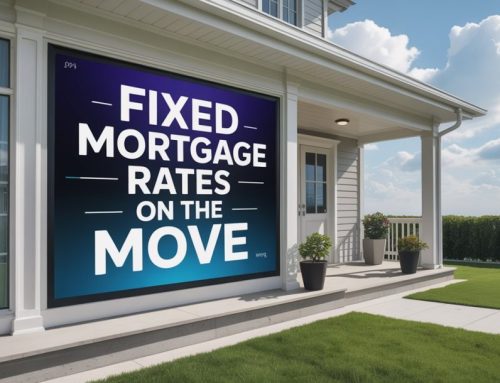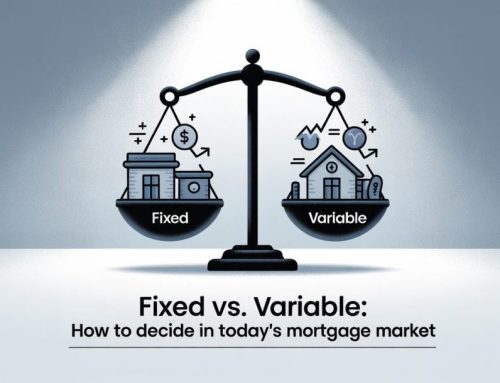There are two ways in which a mortgage lender can register your mortgage. As a standard charge, or as a collateral charge. A charge is just another way of saying ‘registration’. For example, a mortgage is a charge against your property. Let’s take a look at each one in detail to give you a better understanding of what the different charges mean to you.
Standard Charge Mortgage
Most mortgages are registered as a standard charge. At the end of your term, often 5 years, you can switch your mortgage to another lender with little to no additional cost to you. There is still a legal fee, and possibly an appraisal fee, however these fees are paid for by the new lender. All mortgages, be it a standard or collateral charge, will have a discharge fee whenever the lender is being paid out. The discharge fee is usually around $300, but can vary from province to province. There are some lenders who will also cover the discharge fee, resulting in zero costs. With most lenders however, the discharge fee will still apply and can be added to the new mortgage amount.
Many consumers will often refer to a standard charge as a conventional mortgage. I’ve even seen some banks use this terminology, but this is incorrect. Any mortgage that does not require default insurance such as CMHC is considered a conventional mortgage, regardless of the type of charge. This means that you can have a conventional mortgage that is also a collateral charge.
For example, if you are purchasing a home with a down payment of 20% or greater, then you will not require mortgage default insurance, which means your mortgage will be conventional. If you apply for a mortgage through a bank who registers all their mortgages as collateral, and you ask them if you’re getting a conventional mortgage, then they can tell you with confidence that your mortgage will in fact be conventional. This is true. However, this ‘conventional mortgage’ will also get registered as a collateral charge. The best way to ask the question is to ask if the mortgage will be registered as a collateral charge. This way, there is no room for confusion.
Collateral Charge Mortgage
With a collateral mortgage, the lender generally does not cover the legal and appraisal fees, which is the biggest drawback. The legal fee is usually around $800 and the appraisal around $300. There are some lenders who will cover some, or even all of these costs for you, however the rate is often 0.05% higher than it would be if the borrower were covering the costs.
How does this work out in real numbers?
Let’s say you need a $500,000 mortgage amortized over 25 years. You have two options. One at 1.64% with fees of approximately $1,100 which will be paid by you, vs. 1.69% with fees paid by the lender.
Which do you think is the better choice?
The answer is they are almost identical with the cost difference being pretty close to zero. If the mortgage amount was less than $500,000, you’d come out ahead with the lender covering the fees at the higher rate. Over $500,000, and the lower rate with you covering the fees would be the better choice.
The legal fee can be included in the new mortgage, so you would not need to pay this out of pocket. If an appraisal is required, which is usually the case, then you would need to pay it up front since the appraisal report would be required prior to the closing of the new mortgage. The cost of the appraisal can often be reimbursed to you after closing, however every situation is a little different.
Additional Credit Secured By A Collateral Mortgage
Another drawback to collateral mortgages is that any credit cards, lines of credit, overdraft, or loans that you have with the same lender can also be tied to your mortgage. Most people are likely not aware of this, if they are even aware that their mortgage is a collateral charge in the first place. If you have a collateral mortgage and a credit card with the same lender, and if that credit card were to go into default, then your mortgage could be considered in default as well… even though you haven’t missed a single mortgage payment. This is rarely, if ever an issue, but it’s still worth mentioning. If you happen to fall behind on a credit card that is secured by the equity in the home, then it would be an easy situation to rectify. Make the minimum payment and problem solved.
What Is The Benefit Of a Collateral Mortgage?
Some lenders who offer collateral mortgages will give you the option to register your mortgage for up to 125% of the property value. In other words, if you are buying a home for $1 million, you can choose to register the mortgage for $1.25 million, regardless of the actual mortgage amount. The benefit is that if you wanted to borrow additional funds against your future equity then you can do so without any legal cost. An appraisal would still be required, which would be paid by you the borrower. I would not expect the lender to cover this for you, so you’ll be on the hook for the approximate $300 cost*.
You still need to apply and qualify for the additional funds. If the lender were to decline you for the additional financing, then you’d be out of luck as your current lender has tied up all your equity. If you were in a bad position where you were in dire need of funds, then you would have no choice but to refinance the entire mortgage, and pay the associated penalties. If your situation is challenging, then you could potentially be giving up a low mortgage rate in exchange for a high one, which would not be a good position to be in.
How Do You Know If Your Mortgage is a Collateral charge?
Any mortgage that has a second component attached to it, such as HELOC, would be registered as a collateral charge. Only if the HELOC was registered separately would this not apply.
Any freestanding HELOC (without any amortized mortgage attached to it) would also be registered as a collateral charge. This applies regardless of lender.
There are a few lenders who will register ALL their mortgages as a collateral charge, which include TD, Tangerine, and National Bank. Note that if you switched in from another lender, then it’s possible that your mortgage with these lenders may still be registered as a standard charge. Also, TD did not start registering all their mortgages as collateral until October 18, 2010. If you arranged your current mortgage with TD prior to that date, and you have not refinanced since, then you likely have a standard charge mortgage.
You can sometimes tell if your mortgage is collateral simply by the product name. Some of these include:
- Home Power Plan (CIBC)
- STEP (Scotiabank)
- HomeLine (RBC)
- ReadiLine (BMO)
- Fusion (MCAP)
The above would all be registered as collateral mortgages, regardless of whether or not you have a second component attached to it.
Should Collateral Mortgages Be Avoided?
A few years ago, the only way to switch a mortgage at the end of your term was to refinance. There were no options to have the fees included, and rates were often higher. Collateral mortgages received a lot of bad publicity over this period, however times have changed and they are not that big of a deal in most cases.
I’ve seen some people go out of their way to avoid a collateral mortgage, regardless of how much lower the rate might be. In their mind, a collateral mortgage = bad, so they avoid it like the plague. They don’t know why exactly, they just know they don’t want it. I’ve also heard some mortgage ‘professionals’ who say they would never put their clients into a collateral mortgage under any circumstances. While there may be some cases where it makes more sense to opt for a standard charge mortgage, a blanket statement like this is nothing short of bad advice. I’d be surprised if these professionals could even explain their logic in detail.
There is no ‘once sized fits all’ mortgage advice, and everyone’s situation is a little different.
*Note that appraisal costs can vary depending on the property value. They can be as low as $225, or can be over $500 on higher valued or rural properties.








Leave A Comment